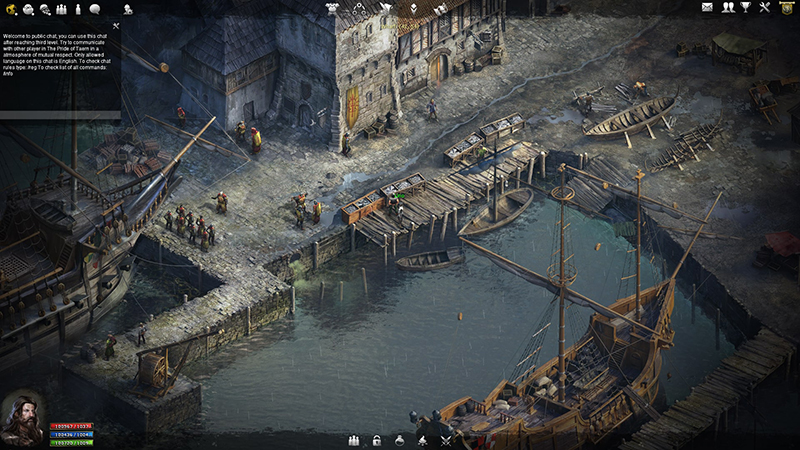Share
It seems difficult to do something truly unique with a city-builder these days, but as my Frankenstein creation of a flying city glistened in the morning sun, it was clear to me that Airborne Kingdom was something unique.
If you’re familiar with the core ideas of the city builder genre Airborne Kingdom won’t be hard to pick up, but once you sink into the experience it takes on quite a different tone. While building your aerial metropolis is a major part, the game is almost more about exploration and ends up feeling more like a survival experience in the early stages.
The basic story setup is that your budding civilization wants to harness the incredible technology of their ancestors, and by creating an airborne kingdom your goal is to reunite the fractured cities of the world and give everyone access to the sky.

Foundations and Infrastructure
As you start building your city you’ll need to lay down paths, as buildings can only be constructed if they’re attached to a path. While you’re constructing your city you’ll need to balance a resource called lift, as well as making sure your city is balanced and not leaning to any one side. Your city flies through the air on its own, and you’ll need to explore the massive world map to find each of the major cities, and then complete requests to ally with them.
There are a variety of resources you’ll need to manage along the way, with the major ones being food and water, as well as coal for fuel. Past that there are five different construction materials, and your population also essentially works as a resource. Certain buildings require citizens to operate, but you also need citizens to construct things and gather resources, so you can’t just pile on the buildings.
You have a birds-eye view over your city and the map, and as you float along you’ll need to keep an eye out for resource caches. By building Hangars you can send planes to collect resources, as well as investigate ruins to obtain relics, used to purchase new technologies from other cities. The final thing you’ll need to manage is morale, which can be increased by building a variety of “Desires” buildings.

All these systems combine into a complex experience that might seem intimidating but becomes easier to understand the more time you put in. There’s a sense of awe and discovery that permeates all of Airborne Kingdom, as you eagerly await the next discovery you might find as your ramshackle city floats along. Each of the cities you need to ally with give you quests to complete, with a little bit of text story attached, helping to add more flavor to the experience.
There are three major areas to explore, and while the first area is resource-rich, the next two start cutting out key resources making it far more challenging to explore. Airborne Kingdom just feels so compelling on every level, and I felt the hours slip away as I focused on painstakingly placing buildings, optimizing the fuel efficiency and speed of my city, and searching for resource caches. There’s a robust upgrade system the game has as well, letting you complete research that has a variety of benefits, like letting you construct buildings on top of each other, reducing coal usage, and more.
Satisfyingly Direct
One thing that needs to be mentioned, of course, is that I played the game on console, which isn’t usually preferable with city-builders and strategy games. What’s surprising, however, is how intuitive the game’s control scheme is, and I had no problem navigating the various options, placing buildings, and selecting resources to gather. There really aren’t any frustrations tied to playing with a controller, which makes the overall experience even more enjoyable.

Airborne Kingdom’s general aesthetic also goes a long way to making it feel unique. The visual style makes the game feel like it’s taking place on some kind of board or map, and the blocky buildings and trees only makes the thrown-together feel of your city even more pronounced. The art style and soundtrack clearly have Middle Eastern influences, and both are equally gorgeous.
The only real problem that crops up with Airborne Kingdom is that it lacks the overall variety of other city-builders. Airborne Kingdom has such intentional design and progression, so it ends up not having the endlessly replayable variety of other builders like Cities: Skylines. Still, it’s an adventure well worth taking at least once, if not more.




